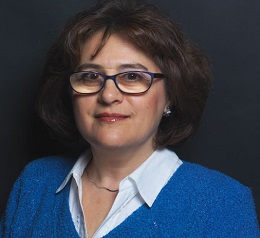Scholars Scholars World Congress on
Material Science and Engineering
THEME: "Advances in Material Science and Engineering"
 23-24 May 2022
23-24 May 2022  ONLINE & VIRTUAL
ONLINE & VIRTUAL THEME: "Advances in Material Science and Engineering"
 23-24 May 2022
23-24 May 2022  ONLINE & VIRTUAL
ONLINE & VIRTUAL 
Holon Institute of Technology (HIT), Israel
Title: WS2 & MoS2, from 2D to 1D structures; Curvature and chirality induced properties of nanotubes
Prof. Alla Zak, is a Head of the Laboratory for Synthesis and Investigation of Nanomaterials and Associate professor in the Faculty of Sciences in the Holon Institute of Technology (HIT), Israel. She is also a Scientific Adviser in the Department of Materials and Interfaces in Weizmann Institute of Science (WIS), Israel. Alla Zak is involved in the field of nanoscience and nanotechnology since 1996, including 6 years of Ph.D. study in Weizmann Institute of Science, Israel; 10 years as chief scientist (CSO) in NanoMaterials, Ltd. company and academic research in HIT from 2012. Recently, A. Zak successfully developed the scalable synthesis of WS2 and MoS2 nanotubes. Being of unique mechanical, chemical and electrical properties, these nanomaterials could find various applications such as solar cell, photodetectors, catalyst in fuel cells, substrate for hydrogen storage and fillers for reinforcing polymers. Alla Zak is an inventor of 2 patents and an author of 70 scientific papers.
Wide investigation of multiwall inorganic nanotubes (INTs) of WS2, a member of the 2D transition metal dichalcogenide (TMD) family, became possible due to the breakthrough in their vapor-gas-solid synthesis, resulting in pure phase and macroscopic amounts. These INTs demonstrate unique properties due to their nanosize, closed-cage arrangement of the layers into chiral tubes and mechanical strength. Thus, (1) bulk photovoltaic effect (BPVE) was recently discovered in INT-WS2. The photocurrent in the nanotube-based device was orders of magnitude larger than in other BPVE materials. The BPVE does not require p–n junctions of traditional photovoltaic effect (PVE) for generation of electric current, and occurs due to the intrinsic properties of INT-WS2: small band gap (1.4-2.1 eV), broken inversion symmetry and polar structure. This progress is particularly important for environmentally benign energy harvesting because the efficiency of PVE has been almost reached the theoretical limit. (2) An exponential increase of the resistivity with tensile strain was demonstrated up to a recorded elongation of 16%, thereby making INT-WS2 suitable for piezoresistive sensor applications. (3) Low temperature cathodoluminescence of single-wall few nm diameter WS2 nanotubes, produced by high-power plasma irradiation of multiwall WS2 INTs, demonstrates blue shift, evidencing quantum confinement and strain effect. Bandgap engineering via size and number of layers control in INTs will be discussed. An advance in extremely complicated synthesis of INT-MoS2 by vapor-gas-solid reaction of Mo oxides with H2/H2S gases will be presented. Recent theoretical calculations demonstrated that mechanical properties of MoS2 are superior to that of WS2, as well as their excitonic emission. Thus, the availability of MoS2 semiconductive 1D nanocrystals will enable their wide investigation, which anticipates to reveal intriguing applications in the field of photovoltaics and optoelectronics.